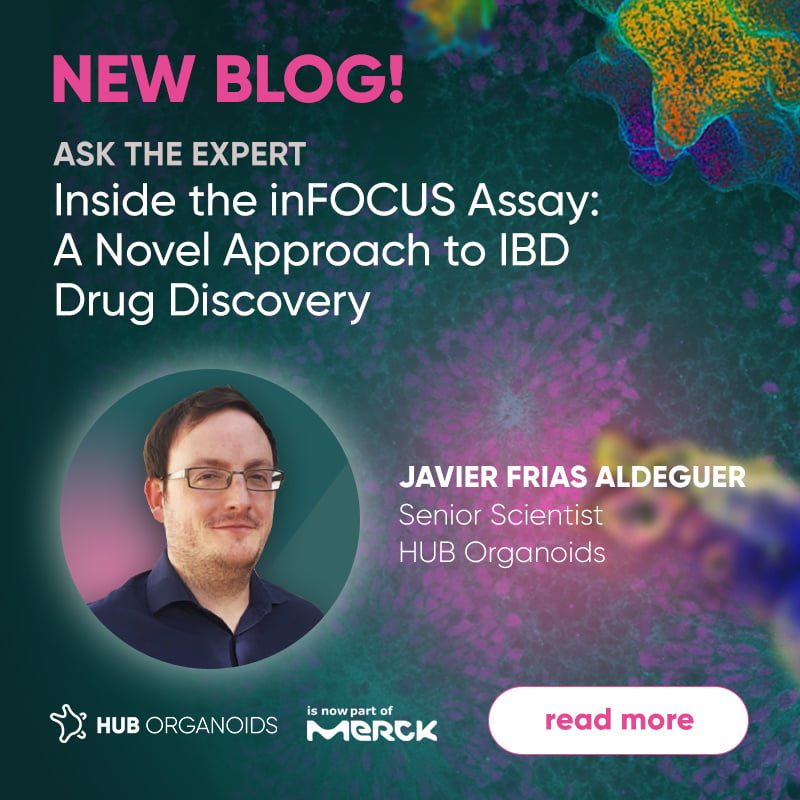Ask the experts - organoids in drug development
Published by Federica Parisi, PhD on Sep 30, 2021
-1.png)
After discussing HUB Organoids™ applications to viral and oncology studies, Drs Rob Vries, CEO and Sylvia Boj CSO from HUB review together with Dr Ryan Conder from our partner STEMCELL Technologies how organoids are being applied to drug development.
ORGANOIDS IN DRUG DEVELOPMENT
How are organoids affecting the landscape of clinical and preclinical drug development? How might this change in the future? What are the challenges of current organoid systems that need to be overcome to realize this?
Organoids are already being used to assess the efficacy and toxicity of lead compounds. The use of 3D cell culture models in this application is important as 2D cell cultures have shown to be poorly predictive of patient response in the clinic and are being gradually repositioned in drug development (Chabner B. A., J Natl Cancer Inst, 2016). Using patient-derived organoid models early in drug development will better inform compound selection for a target patient population, accelerate drug development timelines, and reduce new drug attrition rates. As organoids have been shown to accurately predict patient response in the clinic, they can be used in Clinical Trials in a Dish (CtiD) approaches to identify the patient population with the best chance of therapeutic success, or for personalized medicine strategies where organoids are used as a companion diagnostics tool, whereby each patient treatment is identified based on organoids response in vitro. The main challenges currently faced by the field is reducing the time required to generate a sufficiently large pool of organoids from a biopsy to perform a diagnostic screen and the efficient culture of large numbers of organoids for large scale screening.
Can organoids be used to predict the side effects of potential therapeutics?
Adult tissue-derived organoids are unique in being the only available in vitro model that can be derived from healthy patient tissue. This has already offered opportunities for using organoids in toxicology studies to evaluate both on- and off-target toxicities. Organoids offer a more physiologically relevant model for understanding the mechanism behind the therapeutic activity of the compound enabling a better prediction of the effects on both healthy and diseased tissues.
Other than Matrigel®, what other cell matrices can be used for culturing organoids? Are there more defined matrices available?
The extracellular matrix (ECM) is a key component of organoid culture as it is the scaffold that enables organoids to grow in three dimensions. The most common ECMs used for organoid culture are Matrigel® and Cultrex®, both generated from the mouse Engelbreth-Holm-Swarm (EHS) tumor. These ECMs enable the growth of organoids from a wide range of normal and diseased samples from nearly all tissues. However, new approaches are employing tissue-specific scaffolds, which might contain tissue-specific ECM composition or other regulatory factors are currently under investigation. Fully-defined synthetic matrices are also being investigated for clinical and therapeutic applications as they are believed to provide lower interference compared to animal-derived counterparts (Gjorevski et al., Nature 2016).
More on this and related topics can be watched the on-demand at this link



